The Nintendo had a fair share of accessories from the common to the obscure. Here are a few worthy of mention:
- The Nintendo Zapper
- The NES Advantage
- The Power Pad
- The Power Glove
- Game Genie
- Pro Action Replay
- The R.O.B.
| The Nintendo Zapper |
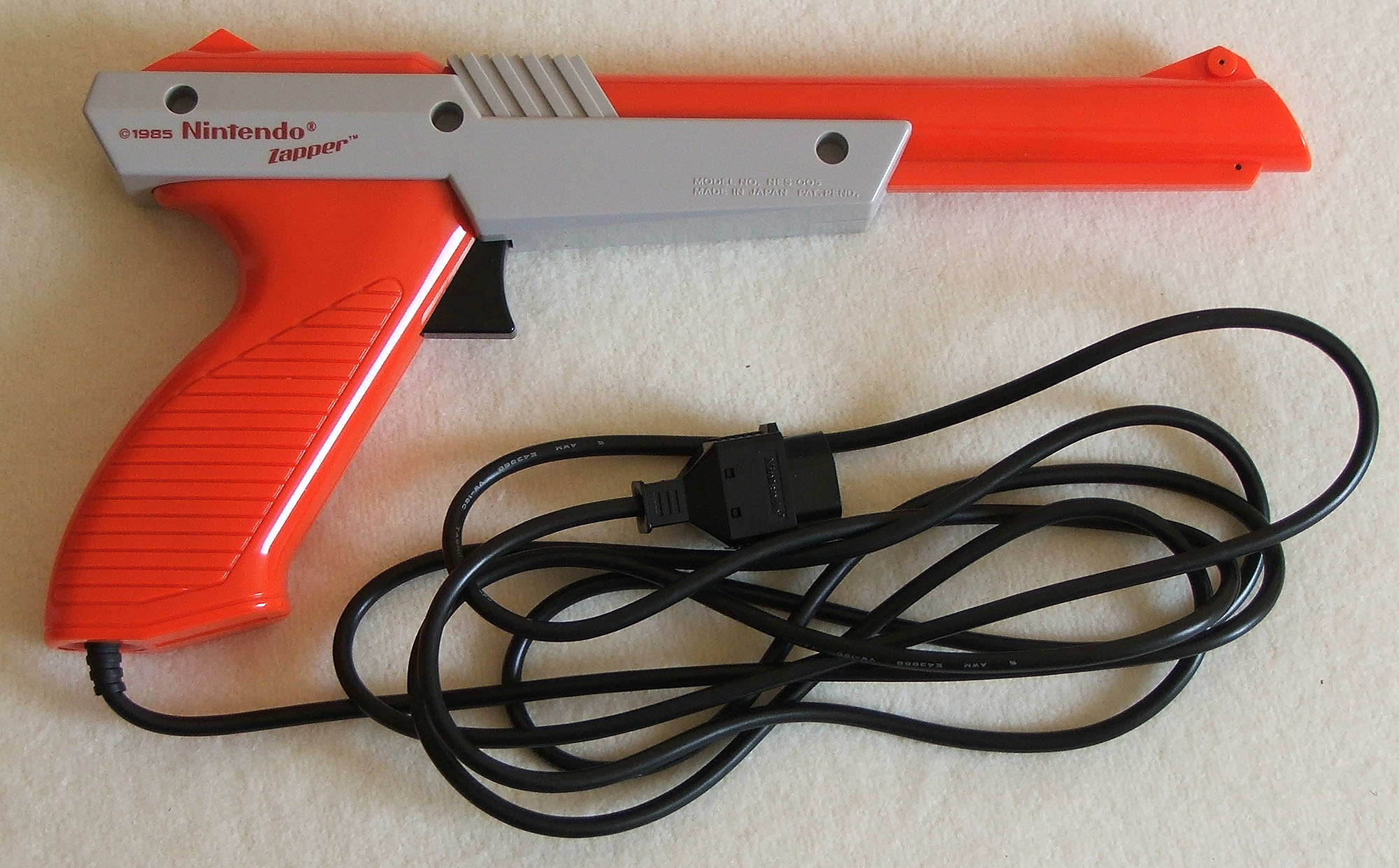 |
The Zapper was shipped with the original console so that it could be used to play the Pack-In game “Duck Hunt”. It used a light sensor that would respond to certain areas of the screen, letting you hit clay pigeons, criminals, and of course, ducks. The only negative to this (other than the fact that it actually resembled a real gun) was that very few games built in the capability to use this accessory. There were a series of ‘trick shooter’ games that could use the device and a few first person shooter games. Otherwise, this remained in a box for most of the life of the console |
Back to Top
| The NES Advantage |
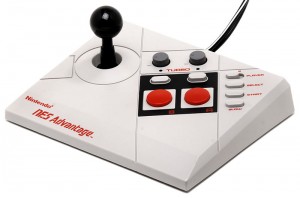 |
The NES Advantage was one of the coolest accessories that one could acquire for the NES but one of the least-advertised accessories. The purpose of the NES Advantage was to give the player an ‘arcade feel’ when playing their favorite games. Do recall that at the time the NES became common, a majority of the hottest games were still Arcade games and kids would plunk endless quarters into the arcade cabinets as they tried to win. Not only did the NES Advantage feature the standard A and B buttons and a joystick for directions but it also features turbo selections and the dials allowed the player to adjust how quickly the button would be pressed in Turbo mode. It also featured a ‘Slow Motion’ button that would essentially serve as a turbo button for the Start button. If the game has a Pause screen or other functions used by pressing start then the slow motion button did nothing. |
Back to Top
| The Power Pad |
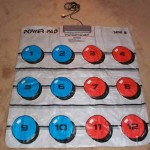 |
The Powerpad was a revolutionary controller that allowed one to stomp (barefoot of course) on various large buttons to emulate running, jumping hurdles, doing fighting moves and many other unique techniques for a truly different gaming experience. This product was released by Bandai originally and later was bought by Nintendo, and yes… it is the prototype for the famous dance pad for playing Dance Dance Revolution (DDR). It also was the precursor to the Wii Fit pad that has become a totally new way of using the game systems for personal health.Suffice to say, however, the generation using this device were not exactly known for their desire to be physically fit (I sure wasn’t) so the mainstream American game player was not all that interested in having to work out and the device only succeeded in popularity in a niche market. |
Back to Top
| The Power Glove |
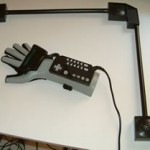 |
The most infamous accessory of all Nintendo’s original accessories, was the ill-fated “Power Glove.” The accessory was large and rather bulky, only suited for right-handed users, and was much more complicated than it should have been. Although the device did allow for a much longer list of controls and initially used a motion sensor (in the top part above the knuckles), it was thoroughly imprecise and rather uncomfortable. To make matters worse, there were only two games designed with the Power Glove as the main controller, a beat-em-up game and it’s Pack-In game “Super Glove Ball”. The device was actually amazingly sophisticated as it featured carbon compression sensors for finger flex detection, and could comprehend 2 separate motions per finger. However, it had to be pared down considerably to be affordable for the mainstream gamer market and thusly was not very successful.The true ‘nail in the coffin’ for the Power Glove was in the Nintendo produced movie (read ad campaign) “The Wizard.” Which featured a gamer who was making his way to a gaming championship to prove he was more than just a weak nerd. His main enemy weilded the Power Glove on his trench-coated body and held it up to the main character uttering the ultimate device killing words: “I love using the PowerGlove! It’s so BAD!”(facepalm). |
Back to Top
| The Game Genie |
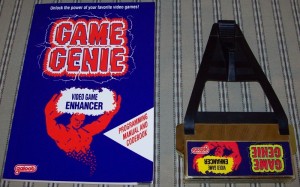 |
The Game Genie was an amazing creation that changed the face of NES gaming (and gaming as a whole) forever. The Game Genie was an actual Nintendo-approved device that was created by Galoob Company. You attached this gold device to the end of your cartridge and stuck it in your NES. Inside that blue book there was a list of codes like ‘FGG4-ACDE’ that would give you unlimited lives and countless other hacks. This device was able to do this by modifying the binary code of the game data in a way that was customer friendly. If you were tired of losing all your items when you died or wanted to beat that boss once and for all you could fire up the codes and be done. Unfortunately, not all games were in this book and it was released before the days of internet for all so finding codes was quite challenging. In the end, the Game Genie could actually damage the internal connector inside the NES console making it impossible to play the games without the adapter. To this day, most emulators still have the capability to use Game Genie codes or its distant cousin, the Pro Action Replay. |
Back to Top
| The Pro Action Replay |
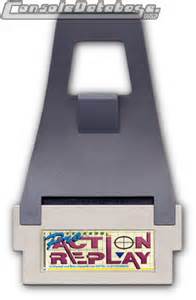 |
The Pro Action Replay (PAR) was similar to the Game Genie but also very distinctively different. The PAR was created by Datel and later iterations of the hardware are available even for modern console systems such as the 3DS. The PAR offered the ability to enter PAR codes that were literally hexadecimal codes that directly modified the program binaries on the game. Not only did this allow a very dedicated person to hack virtually any command on the console but also it allowed for the use of state saves. A state save stored a snapshot of the exact place and configuration of a game when activated including what binaries were set on the game code so a person could literally save every few seconds rather than seek out save points or other game save systems stored on the game ROMs. The idea was that one could save the state, attempt a hack with the PAR and then load to see if the game responded accordingly. The Save State and PAR functionality has been coded into most modern day emulators. One function that is quite unique to the PAR is that if one knew the structure of a game binary, they could use the PAR to access development features that were not intended for public use or allow access to hidden/debug modes or levels that would otherwise not be found. |
Back to Top
| Robotic Operating Buddy (R.O.B.) |
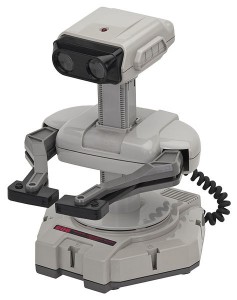 |
One of the weirdest and quirkiest accessories available for the NES was the Robotic Operating Buddy (ROB for short). This guy, reminiscent of Proto Number 5 the robot from the Short Circuit movies, was an NES accessory released to the public in 1985 in wake of the Video Game Crash as a way for NES to show that the hardware was still viable. ROB only worked with two games, Gyromite and Stack-Up. Basically, the player would plug a controller into the NES and ROB into the other port. The player would enter a command in the controller that would send a light signal to ROB and provide him any of 6 instructions to aid the player. In Gyromite you had to hit the commands in time for ROB to pick up and deliver dynamite and in Stack-Up, you would send instructions for him to stack blocks on the screen. I have never personally seen this guy but I would have been the coolest kid on my block if I owned him. |
Back to Top







